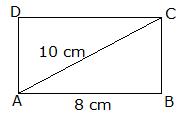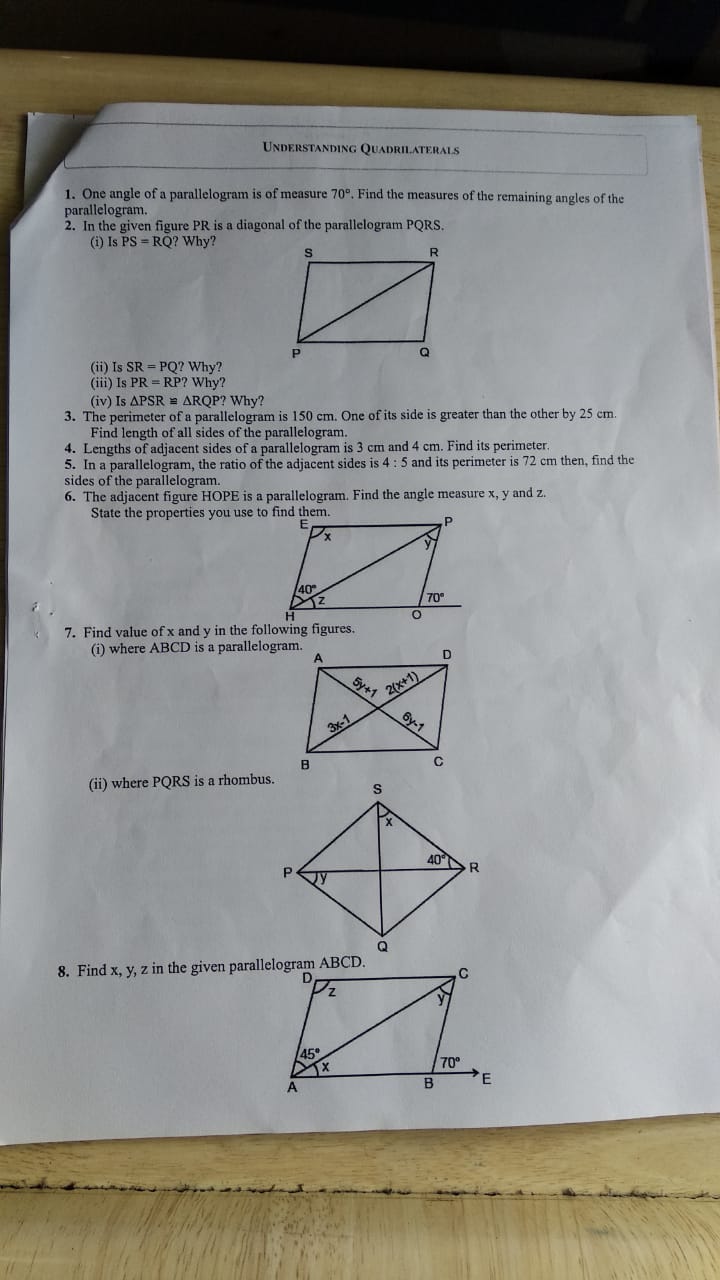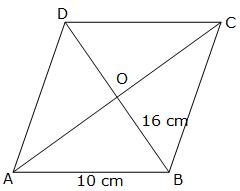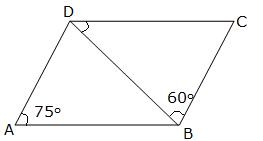CBSE Class 8 Answered
The length of a rectangle is 8 cm and each of its diagonals measures 10 cm. Find its breadth.
Asked by Topperlearning User | 04 Jun, 2014, 01:23: PM
Let ABCD be the given rectangle in which length AB = 8 cm and diagonal AC = 10 cm.
Since each angle of a rectangle is a right angle,
we have ∠ABC = 900 .

From right angled triangle ABC , we have
AB2 + BC2 = AC2
⇒BC2 = AC2 - AB2 = {(10)2 -(8)2} = (100 - 64) = 36
⇒BC = ![]() = 6 cm.
= 6 cm.
Hence , breadth = 6 cm.
Answered by | 04 Jun, 2014, 03:23: PM
Application Videos
Concept Videos
CBSE 8 - Maths
Asked by pothuraju831 | 13 May, 2020, 09:39: PM
CBSE 8 - Maths
Asked by lalitshuklapiyus | 11 Oct, 2019, 09:23: AM
CBSE 8 - Maths
Asked by neelsaki007 | 19 Aug, 2019, 06:52: PM
CBSE 8 - Maths
Asked by suerrohith25 | 31 Dec, 2018, 04:12: PM
CBSE 8 - Maths
Asked by Topperlearning User | 29 Jan, 2013, 09:00: AM
CBSE 8 - Maths
Asked by Topperlearning User | 04 Jun, 2014, 01:23: PM
CBSE 8 - Maths
Asked by Topperlearning User | 04 Jun, 2014, 01:23: PM
CBSE 8 - Maths
Asked by Topperlearning User | 04 Jun, 2014, 01:23: PM
CBSE 8 - Maths
Asked by Topperlearning User | 04 Jun, 2014, 01:23: PM







